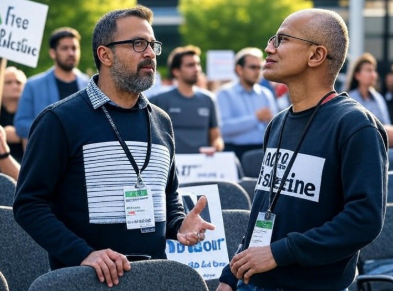If you’re a regular viewer of NHK’s streaming content, you’ve probably noticed something strange happening lately. The broadcaster’s new platform, “NHK ONE,” launched on October 1st, replacing the old “NHK Plus” service. But here’s the kicker – only about one in four users have actually made the move. That’s right, after nearly two weeks, a whopping 75% of existing users are still sitting on the fence.
Let me break down what’s really going on with this migration, why it matters, and what it means for the future of streaming in Japan.
The Numbers Tell a Concerning Story
NHK recently announced that approximately 1.63 million users migrated to NHK ONE during the first 13 days after launch. Sounds impressive, right? Well, not quite. When you consider that NHK Plus had around 6.68 million registered IDs as of the end of September, this represents only a 24% migration rate.
But it gets even more interesting. NHK Plus was averaging about 2.64 million unique browsers per week during the first quarter. That means the migration numbers aren’t even reaching the platform’s active weekly user base. This is what we call a problem in the tech world.
Think about it this way: if you ran a restaurant and moved to a new location just down the street, but three out of four of your regular customers didn’t show up to the new place, you’d be pretty worried. That’s essentially what’s happening here.
Why the Hesitation?
The migration process isn’t exactly what you’d call user-friendly. Unlike modern streaming services where you can often carry over your account with a simple click, NHK ONE requires users to jump through several hoops.
First off, you need to register both your receiving contract number and add a separate payment method. Even if you were already registered on NHK Plus, you still need to agree to the new terms and conditions and complete the migration procedure. This isn’t a seamless transition – it’s more like moving to a completely new house rather than just renovating your current one.
The early days were even rougher. During the first few days after launch, there were technical issues where verification codes required for account registration weren’t being delivered to certain email addresses, including Gmail users. While NHK fixed this problem by the second day, first impressions matter. When people encounter friction during their first interaction with a new platform, many simply give up and decide to try again “later” – and we all know how that usually goes.
The Support Infrastructure Problem
To NHK’s credit, they’re not just sitting back and watching the numbers stay stagnant. The broadcaster has set up registration support stations at various locations across the country and at events. They claim around 50,000 people visited these support stations during the first 13 days. Call centers are also being flooded with inquiries, which suggests there’s genuine confusion about the process.
But here’s the thing – having to set up physical support stations for a digital migration says something about the complexity of the process. In today’s world, a well-designed digital transition shouldn’t require people to physically show up somewhere for help. It’s like needing an instruction manual to use a smartphone – if the process needs that much hand-holding, something’s fundamentally wrong with the design.
The Notification Strategy
Starting from the 11th day after launch, NHK began displaying messages on NHK ONE accounts to encourage users who haven’t linked their receiving contract to do so. Interestingly, users who have already completed the migration from NHK Plus to NHK ONE accounts and verified their receiving contracts won’t see these messages.
This phased notification approach makes sense from a technical standpoint – you don’t want to bombard users who’ve already done what you’re asking. But it also reveals something: NHK knows they have a problem and they’re trying to solve it with reminders rather than addressing the root cause of why people aren’t migrating in the first place.
What This Means for the Streaming Landscape
This situation highlights a broader issue in the streaming industry that doesn’t get talked about enough: user migration is hard, even when you control both platforms. Companies often underestimate the inertia that exists in user behavior. If something works “good enough,” people are reluctant to change, especially when the change requires effort on their part.
NHK isn’t alone in facing these challenges. We’ve seen similar issues with other service transitions around the world. Remember when Google tried to move everyone to Google+? Or when various social media platforms attempted to consolidate services? The pattern is always the same – companies assume users will follow them anywhere, and users prove that assumption wrong.
The Real Cost of Complicated Migrations
Beyond the obvious user experience problems, there are deeper implications here. Every user who doesn’t migrate represents lost engagement. In the streaming world, engagement is everything. These platforms rely on regular viewership to justify their existence and funding.
For a public broadcaster like NHK, which is funded by receiving fees, having a significant portion of your digital audience stuck in limbo isn’t just inconvenient – it’s potentially problematic from a service delivery standpoint. If you’ve upgraded your infrastructure and services, but most of your users are still on the old system, you’re essentially maintaining two platforms simultaneously, which doubles your operational costs and complexity.
Solutions: What Could NHK Have Done Differently?
Looking at this situation objectively, there are several approaches that might have worked better:
Automatic Migration with Opt-Out: Instead of requiring users to actively migrate, NHK could have automatically transferred accounts and allowed users to opt out if they had concerns. This inverts the inertia – now inaction leads to migration rather than staying put.
Grandfather Clause: Keep the old NHK Plus running in parallel for a longer transition period. Yes, it costs more, but it gives users time to adjust without feeling forced. Netflix, for instance, has historically been very patient with transitions, sometimes running legacy systems for years.
Simpler Authentication: The requirement to register both receiving contract numbers and payment methods separately seems unnecessarily complex. Modern authentication systems could have handled this more elegantly, perhaps using existing NHK account credentials as a starting point.
Better Communication: While NHK did inform users about the change, the communication strategy seems to have focused on the “what” and “when” rather than the “why” and “how.” Users need to understand both why they should migrate and exactly what steps they need to take, preferably with visual guides and examples.
The Path Forward
So where does NHK go from here? The 24% migration rate after nearly two weeks isn’t necessarily a death sentence, but it’s definitely a warning sign. The broadcaster has several options:
They could extend the transition period and be more patient with stragglers. They could simplify the migration process even further, perhaps eliminating some of the verification steps for trusted existing users. They could increase incentives for migration – maybe exclusive content or features only available on NHK ONE.
The notification strategy they’ve begun implementing is a step in the right direction, but it needs to be paired with genuine process improvements. Reminding people to do something difficult doesn’t make the thing less difficult.
Lessons for Other Platforms
If you’re running any kind of digital service, this situation offers valuable lessons:
Never underestimate user inertia. People will stick with what they know, even if the new option is objectively better. You need to make migration so easy that staying put is actually harder.
Test your migration process extensively. Those email delivery issues on day one? That should have been caught in testing. First impressions matter immensely in tech.
Provide multiple pathways. Not everyone learns the same way or feels comfortable with the same processes. Some people want self-service online guides, others want to call someone, still others prefer in-person help. Support all these preferences.
Make the value proposition crystal clear. If users don’t understand why they should migrate, they won’t. “Because we’re shutting down the old service” isn’t compelling enough. There needs to be a positive reason to move, not just avoiding a negative outcome.
The Bottom Line
NHK’s migration from NHK Plus to NHK ONE is turning into a case study in how difficult platform transitions can be, even when you have a captive audience and complete control over both the old and new systems. The 24% migration rate after 13 days isn’t disastrous, but it’s far from the smooth transition the broadcaster probably envisioned.
The real test will be whether NHK can turn this around or whether they’ll end up with a permanently fragmented user base. As they continue pushing notifications and maintaining support infrastructure, the question remains: will they fix the underlying process issues, or just keep pushing harder on a system that’s fundamentally too complex?
For users still on NHK Plus, the message is clear – the transition is coming whether you like it or not. The old service ended on September 30th, and NHK ONE is the future. But this situation proves once again that in technology, building it doesn’t mean they will come. You have to make the path so smooth that not following it feels like the harder choice.
And that’s a lesson worth remembering, whether you’re a national broadcaster or a startup with three users.



